- Home
- Tim Winton
Island Home Page 2
Island Home Read online
Page 2
In the semi-arid range country where I live these days the heavens draw you out, like a multidimensional horizon. For most of the year the arrival of a cloud is something of an event. Along the south coast where I spent my adolescence, the air boils with gothic clouds. There the sky’s commotion renders you so feverish your thoughts are closer to music than language. In the desert the night sky sucks at you, star by star, galaxy by galaxy, until you begin to feel you could fall out into it at any moment. In Australia the sky is not the safe enclosing canopy it appears to be elsewhere. It’s the scantiest membrane imaginable, barely sufficient as a barrier between earthbound creatures and eternity. Standing alone at dawn on the Nullarbor, or out on a saltpan the size of a small country, you feel a twinge of terror because the sky seems to go on forever. It has perilous depths and oceanic movements. In our hemisphere the sky stops you in your tracks, derails your thoughts, unmoors you from what you were doing before it got you by the collar. No wonder Australian painters, from the Kimberley’s Jarinyanu David Downs to Tasmania’s Philip Wolfhagen, continue to treat it as a worthy subject, despite the frustrations of some critics who expect them to move on to something a little more ‘sophisticated’, by which they mean untainted by the specifics of place. For some islanders the weight of particularity is too great to bear. They spurn the bounded isolation of Tasmania, Lord Howe, the Torres Strait or the so-called mainland and seek refuge in cosmopolitanism, and who could blame them? Australians have long felt this push and pull. Moated in by oceans, sharing no borders, they become curious, restless, oppressed by the relentless familiarity of their surroundings. When you’re on an island the grass will always be greener elsewhere because it can’t be glimpsed across the frontier. You’re mentally greening places that are oceans away. Islanders can’t help but conjure distant paradises for themselves. Australians are great travellers. You meet them as expatriates all over the world. Now and then you still encounter those of the old school who are touchy about self-exile, as if their countrymen disapprove of them the way they might have in the 1950s. The most defensive among them despise those who stayed home, and it’s instructive and quite moving to watch some return in late life to mend bridges, uncertain if it’s home that’s become more congenial or something in themselves that’s deepened with time.
There is no denying the fact that there’s something physically relentless about Australia, but there’s also something hauntingly paradoxical, for to even the most reverent observer it sometimes feels as if this continent is more air than matter, more pause than movement, more space than time. The place is still itself. It continues to impose. It imprints itself upon the body, and in order to make sense of it the mind is constantly struggling to catch up. This is why, despite the postmodern and nearly post-physical age we live and work in, Australian writers and painters continue to obsess about landscape. It’s not that we are laggards. We are in a place where the material facts of life must still be contended with. There is so much more of it than us. We are forever battling to come to terms. The encounter between ourselves and the land is a live concern. Elsewhere this story is largely done and dusted, with nature in stumbling retreat, but here our life in nature remains an open question and how we answer it will define not just our culture and politics but our very survival.
To be a writer preoccupied with landscape is to accept a weird and constant tension between the indoors and the outdoors. I am so thin-skinned about weather and so eager for physical sensation I seem to spend a shameful amount of energy fretting and plotting escape, like a schoolboy. Sat near a window as a pupil, I was a dead loss. And I’m not much different now. I can’t even hang a painting in my workroom, for what else is a painting but a window? My thoughts are drawn outward; I’m entranced. Which is a romantic way of saying I’m mentally bogged to the boards. So a lot of the time I write in a blank cubicle, my back to the view. Which means I spend quite a bit of the day getting up to leave the room, to stand outside in the sunlight for a minute, sniffing the wind, looking at the sky. It’s like the compulsive adjusting of a valve. On occasion I feel better for having done so. The rest of the time I regret it. The grown-up in me concedes that at least I’ve had a taste of the day. But the kid within can only feel more keenly what he’s missed.
Now and then, of course, I just bolt. I pile a few chattels into the LandCruiser and hit the road. I drive until sunset and then pull over in a different state of mind, or even another state of the Federation altogether. There’s often no purpose to these trips beyond the joy of being in the open, unrolling a swag in a creekbed or in a hollow between dunes, sitting by a fire and watching the stars come out like gooseflesh in the heavens. These headlong excursions begin as flights from enclosure and I know they sound like escapes, but to me they’re more like calls answered. Within moments of leaving, once I’ve achieved some momentum, it’s as if I’m subject to a homing impulse I barely understand. Lying under the night sky I feel a curious sense of return and restoration, not unlike the way I felt as a kid coming in the back door to the sudsy smell of the laundry and the parental mutter of the tub filling down the hall.
Still, going home is not always a cosy business. It can be harsh and bewildering. The places dearest to me can be really hard to reach. They’re austere, savage, unpredictable. And like taciturn cousins and leery in-laws they don’t always come out and say what they mean. They give you the stink-eye at breakfast and do what they can to make your stay uncomfortable. You arrive moody and distracted, unprepared for the complexity of the family dynamics, wrongfooted from the get-go. Not much of our country is lush or instantly congenial. The regions I know best are particularly challenging and my home range in the west can be hard work – it’s spiky, dry, irritating, even humiliating, and after some visits I often feel as spent and dismayed as any guest at a Christmas lunch, wondering why the hell I bothered. But homecomings are partly about submitting to the uncomfortably familiar, aren’t they? Like a hapless adult child, you go back for more, despite yourself, eternally trying to figure out the family puzzle. Even so you get sustenance, just from trying, by remaining open to the mystery, suspecting that if you give up on it you’ll be left with nothing.
This country leans in on you. It weighs down hard. Like family. To my way of thinking, it is family.
I have spent a lot of time watching Australians do this filial dance with landscape. Urban and prosperous as they are, living beyond the constraints of weather and nature in a way their forebears could never have imagined, many seek to engage in an almost ritual, if contradictory, preoccupation with the outdoors, spending a fortune each year on off-road vehicles, caravans, campers and adventure equipment. Some of this is mere fetish, some is purely aspirational, but millions of people are still eager to be out hiking, climbing, camping, kayaking, fishing, surfing, sailing or exploring the first chance they get. It’s not simply a matter of escaping the indoor servitude of working life. There is a palpable outward urge, a searching impulse, something embedded in our physical culture, our sensory make-up. It speaks of an implicit collective understanding that the land is still present at the corner of our eye, still out there, but also carried within, as a genetic connection. You don’t need to lurk in a camping store to pick up on this vernacular assumption. Half an hour at a suburban barbecue will suffice. You see it in people’s behaviour as much as in what they utter. It’s down hard and deep like the taproot of a half-forgotten tree, and it shows no sign of withering away. For despite how cossetted and manicured and airconditioned contemporary life has become, the land remains a tantalizing and watchful presence over our shoulder. We’ve imbibed it unwittingly; it’s in our bones like a sacramental ache. Waiting for us. Even if only as an impending absence. If such a yearning wasn’t real advertisers wouldn’t spend billions of dollars taunting us with it. Behold the glory of Kakadu, they tell us, the endless beaches of Fraser Island, the blood-red breakaways of Karijini, the darkling mysteries of the Tarkine, the miracle of Lake Eyre in flood. And here, of course, is the vehicle to get you
there, the shoes to wear when you arrive, the drink you need to celebrate having made the effort. To sell something disposable they need to set it against something truly substantial and enduring. And in Australia what is more impressive than the land? Culturally, psychologically, it’s still the gold standard.
No matter how we live, and what we think of ourselves, the sublimated facts of our physical situation are ever-present, and as moving water grinds stones into fresh and often unlikely shapes, the land presses in, forever wearing, pushing, honing. Most of the time we barely register the attrition. In a disembodied era of digital technology and franchise culture there are periods when even an Australian at home can feel he or she might be anyplace, or perhaps no place at all. But wildness soon intervenes to disabuse us. The pressure of geography reasserts itself palpably and unmistakably to remind us that, of course, we could only be here. On the island continent the specifics are weighty and implacable. For most of the twentieth century you could have argued that amongst peoples of developed nations this felt pressure – the presence of wildness – was a default experience unique to Australians. In the richer countries the elements became inconsequential. Feeling susceptible to the vagaries of weather was largely the lot of the poor in undeveloped places. But that was before climate change. Unpredictable and unseasonal weather has begun to erode that settled sense of immunity and now even the wealthier nations find themselves at the mercy of nature. In Europe and North America this recent vulnerability is a sudden reversal, but here it’s our vivid, steady state. Climate change has intensified what we’ve always felt. For generations at school we sang the praises of Australia’s beauty but also ‘her terror’. We always knew we were subject to the whims of the wide brown land, and as extremes of weather become more commonplace this underlying perception of exposure is unlikely to fade. Nowadays bushfires don’t just threaten the outskirts of timber towns, they infiltrate and ravage the suburbs of capital cities, panicking and paralyzing metropolitan populations. Flood events are no longer only the nightmare of rural riverside communities; in recent years Brisbane has been calamitously inundated. Other coastal capitals, like Perth, are so permanently drought-affected that without desalination plants they would no longer be viable settlements at all. Geography and weather have never been mere backdrop in this country, and given the obvious trends they won’t be slipping from consciousness any time soon. You only need stand on a mainland street corner in the business district and watch the desert dust fall like rain upon the gridlocked traffic to know it. Whatever else we’ve told ourselves, we are not yet out of nature and nature is not done with us.
Modern Australia has always been a permeable, contingent settlement and it remains so, for wherever Australians live, whether they’re regional or urban, indigenous or not, there it is, pulsing and looming at any moment, like a family memory. Even out in the shimmering distance where the horizon slips and crawls implausibly in the heat, the land twitches and ticks, forever threatening to foreground itself and take over the show. The island insists, it continues to confound, enchant and appal. It fizzes, groans, creaks and roars at the perpetual edge of consciousness. For indigenous Australians this apprehension is as deep and intimate as it is ancient. It’s the fruit of countless generations of experiences. For newer arrivals the feeling is fainter, inchoate, intermittent, even confused, but however tentative and vulnerable this sense of relatedness might be, it’s a sign of hope. In all its range of sensitivities and perceptions, our geographically thin skin is a boon to this culture. It’s good for the spirit, to be reminded as an individual or a community that there will always be something bigger, older, richer and more complex than ourselves to consider. Despite our shared successes, our mobility and adaptability, there remains an organic, material reality over which we have little control and for which we can claim no credit. To be mindful of that is to be properly awake and aware of our place.
Over great passages of time the land has always made people anew. Many of us are startled to learn how different we are from our immigrant and convict forebears, for this is a place that eventually renders people strangers to their origins. It retains a real, ongoing power to bend people out of shape, to transform them. It influences our habits and thoughts, our language, our sensory register. However stubbornly many of us might resist its influence, it moves us on somehow. In my own lifetime Australians have come to use the word ‘country’ as Aborigines use it, to describe what my great-great-grandparents would surely have called territory. A familial, relational term has supplanted one more objectifying and acquisitive. Over generations colonial contempt slowly and fitfully made way for diffidence. This was supplanted by an affection tempered by ambivalence and uncertainty, and in recent decades there has been an emergent admiration and respect for the land we find ourselves in. Concepts of patriotism have also evolved. A patriot need no longer devote himself to an abstraction like the state. Now a patriot will be as likely to revere the web of ecosystems that make a society possible, and a true patriot is passionate about defending this – from threats within as much as without – as if the land were kith and kin. This is why we write about it. This is why we paint it. From love and wonder, irritation and fear, hope and despair; because, like family, it refuses to be incidental.
II
Fremantle, 1999
The real estate agent shows us through the handsome Victorian house with its cricket-pitch corridors and long sash windows. It’s a hot day and you can smell the sea close by.
At the rear, full of northern light, is a big room of steel and glass into which a pond projects from outside. It’s a nice touch, maybe a bit fancy for my taste, but it’s water and I’m a sucker for that. I kneel a moment, expecting portly koi or some other goggle-eyed exotic, but what I see drawn up sleepily atop a slimy rock comes as such a surprise I let out an embarrassing yelp. The agent looks back. My wife comes over with that special look on her face but when she crouches beside me and peers into the pond she laughs. We’re both watching a western long-necked turtle, a juvenile no larger than a child’s hand.
‘I knew he’d like it,’ says the agent.
‘You have no idea,’ mutters my wife.
‘There’s another one hiding in there somewhere,’ he says.
‘Actually,’ I say with great reluctance, ‘the turtles could be a bit of a problem.’
‘You’re not turtle people, then?’
We look at each other, my wife and I. The creature stirs, unfurls its snake-like neck and clambers into the water. The good news is this is not a critically endangered swamp turtle, of which perhaps only fifty remain in the wild. Yet to keep even the more common long-necked you need a special permit, and we just know that the moment either of us asks about the paperwork for these little specimens things will get awkward.
‘We’re more into fish,’ says my wife.
Sensing a snag, and anxious to point out the other virtues of the property, the agent bounces on the balls of his feet, but I linger at the pond, thinking of our old neighbourhood, of bare feet on yellow sand, the secretive shadowlands of reeds and tiger snakes. My wife and I grew up in adjoining streets where many yards backed onto bush and wetlands. On one side of the jarrah picket fences, parched buffalo lawns and Hills Hoists. And on the other, a wilder world of frog-song and waterbirds where kids like us ran feral. We hunted for tadpoles, gilgies, bobtails and King’s skinks and did what we could to knock writhing knots of spitfires from the limbs of tuarts and marri trees. Gilgies were a prize, but of all the treasures you could come home with, the greatest trophy was the long-necked turtle.
The turtle in the pond has holed up. My wife nudges me. I haul myself upright and follow her and the agent through the rest of the house, which seems to have bought us already.
A few weeks later we take possession and as agreed the turtles are gone. I’m relieved. I could really do without the complication. But pausing at the uninhabited pond I feel a twinge of regret.
‘Maybe we could stock it with gilgi
es,’ I say.
‘Maybe,’ says my wife, with bigger things on her mind.
‘Anything but koi,’ I declare.
My wife murmurs something indistinct but vaguely affirmative.
The gilgie (Cherax quinquecarinatus) is a freshwater crayfish native to the streams and wetlands of south-west Western Australia. It’s a hardy little creature – we learnt that as kids. A gilgie could absorb any kind of childish carelessness and swim away at day’s end, and after years of drought when the swamp all but dried up they’d appear with the first rains, having burrowed into the watertable for the duration. What we didn’t know as children was that gilgies are a keystone species – they play a crucial role in maintaining the health of waterways and although they’re not on the brink of extinction like the western swamp turtle, their range has been severely reduced by habitat being lost to land-clearing and salination.
A week later we buy a few gilgies and I release them excitedly into the pond, but from the outset things don’t go well. Our little decapods are restless and they’re voting with all ten of their feet. Afterwards we realize we haven’t provided enough vegetation. The pond is too clean, too clinically neat, and there’s neither sufficient cover nor food. We’ve taken on a bunch of escape artists. At breakfast one of the kids finds a drowsy specimen under the dining table. Another expires beside the door as if vainly awaiting its Steve McQueen moment. A third, obviously smarter, takes the outside route and makes it as far as the swimming pool, but the salt and the chlorine are his undoing.
We get koi. I lose interest in the pond. It’s a sore point for many a year.
Settlers at the edge
I spent my first twelve years in the outer suburbs of Perth when the coastal bushland of Karrinyup was being bulldozed to make way for cheap public housing. The old dunes with their ancient zamias and grasstrees were flattened. Thickets of banksia were bowled over. Groves of hardwoods like marri and tuart were razed and burnt. Churned dirt was pegged out in grids and along the new limestone tracks our outpost of progress slowly took shape. The settlement became a neighbourhood of picket fences, TV aerials and mobs of roaming kids. Homes were boxy little brick-veneer bungalows that varied only according to which side their porches faced and how fast and successfully the newcomers planted their buffalo grass and roses in the white-grey sand. Ours was at 14 Gwelup Street, on the lower side. For a long time there were no trees on our blocks, though all about us, in the no-man’s-land beyond the boundaries, the bush toiled on noisily. The neighbourhood was isolated and transitional. It felt like a remote colony. Milk and bread were delivered and a couple of days a week the vegie truck crept through the streets, heralded by a jangling bell. Men drove the family car to work. There was almost no public transport. Whenever there was a vehicle free my mother and her friend next door seized on the chance to drive the few miles to the nearest butcher and from there to the hardware for heating fuel, and as my mother remembers it, ‘Whoever wasn’t pregnant hefted the five-gallon kero tin back to the car.’ In the days before seatbelts you could squeeze five kids and a lot of shopping into a Morris Minor and it made for a ratty, rollicking trip when one bawling infant set off another, but to me these were grand excursions. When you lived in a settlement as anarchic and piecemeal as ours, six shops and a bitumen ‘plaza’ constituted civilization.

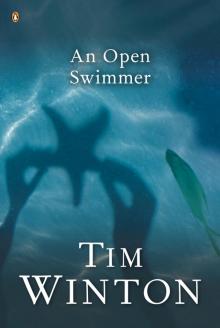 An Open Swimmer
An Open Swimmer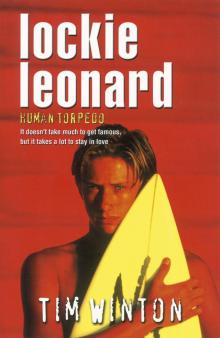 Human Torpedo
Human Torpedo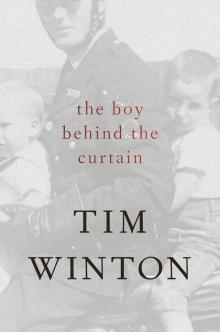 The Boy Behind the Curtain
The Boy Behind the Curtain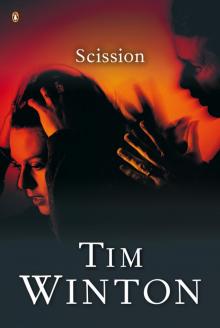 Scission
Scission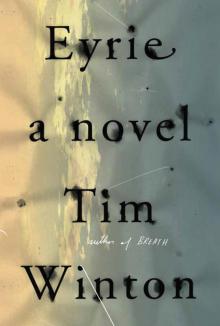 Eyrie
Eyrie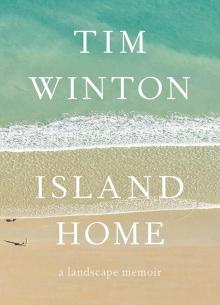 Island Home
Island Home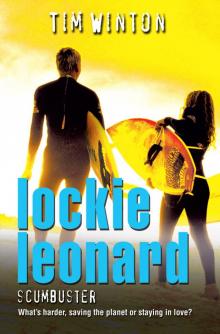 Scumbuster
Scumbuster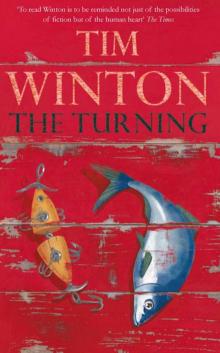 The Turning
The Turning Legend
Legend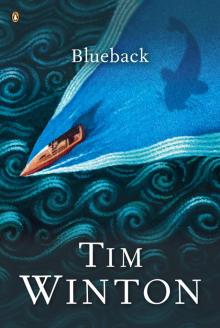 Blueback
Blueback Signs of Life
Signs of Life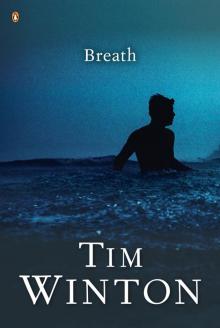 Breath
Breath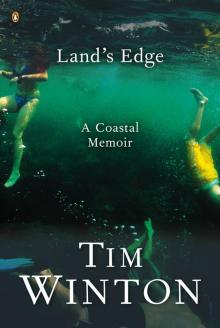 Land's Edge
Land's Edge Cloudstreet
Cloudstreet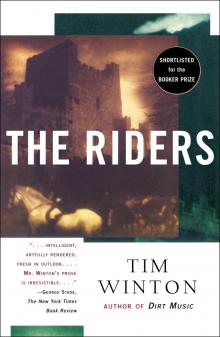 The Riders
The Riders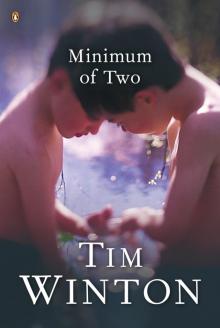 Minimum of Two
Minimum of Two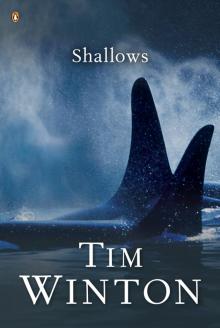 Shallows
Shallows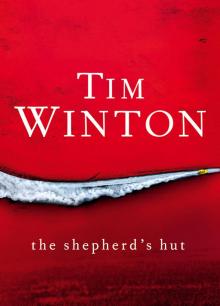 The Shepherd's Hut
The Shepherd's Hut In the Winter Dark
In the Winter Dark